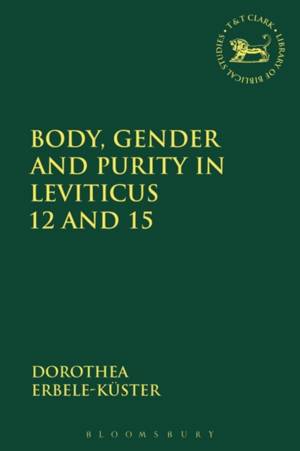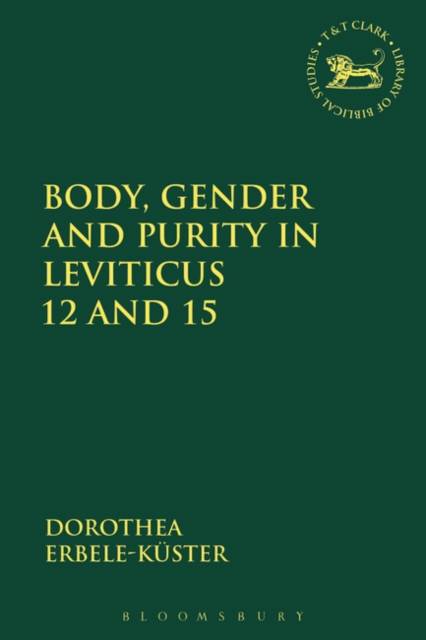
- Afhalen na 1 uur in een winkel met voorraad
- Gratis thuislevering in België vanaf € 30
- Ruim aanbod met 7 miljoen producten
- Afhalen na 1 uur in een winkel met voorraad
- Gratis thuislevering in België vanaf € 30
- Ruim aanbod met 7 miljoen producten
Zoeken
Body, Gender and Purity in Leviticus 12 and 15
Dorothea Erbele-Küster
€ 69,45
+ 138 punten
Uitvoering
Omschrijving
The so-called purity laws in Leviticus 11-15 reflect a cultic and social view of the male and female body. These texts do not give detailed physiological descriptions. Instead, they prescribe what to do in the cases of skin disease, delivery and wo/man's genital discharges, but the particular way of dealing with the body and the language used in Leviticus 12 and 15 ask for clarification: how do these texts construct the male and female body? Which roles does gender play within this language?
By means of themes such as menstruation and circumcision, Erbele-Kuester unfolds the language used for the body in Leviticus and its interpretation history. Her study provides material for a contemporary anthropology of bodies which relates the human sexed body to God's holiness.
By means of themes such as menstruation and circumcision, Erbele-Kuester unfolds the language used for the body in Leviticus and its interpretation history. Her study provides material for a contemporary anthropology of bodies which relates the human sexed body to God's holiness.
Specificaties
Betrokkenen
- Auteur(s):
- Uitgeverij:
Inhoud
- Aantal bladzijden:
- 288
- Taal:
- Engels
- Reeks:
Eigenschappen
- Productcode (EAN):
- 9780567708762
- Verschijningsdatum:
- 25/08/2022
- Uitvoering:
- Paperback
- Formaat:
- Trade paperback (VS)
- Afmetingen:
- 156 mm x 234 mm
- Gewicht:
- 290 g

Alleen bij Standaard Boekhandel
+ 138 punten op je klantenkaart van Standaard Boekhandel
Beoordelingen
We publiceren alleen reviews die voldoen aan de voorwaarden voor reviews. Bekijk onze voorwaarden voor reviews.








